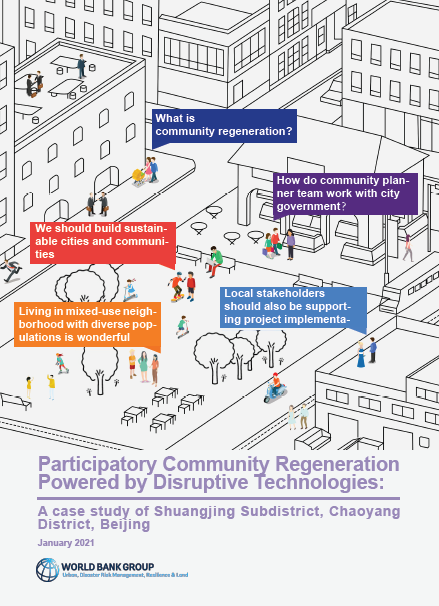
-
Country/City
Beijing / China
-
Published On
January 19, 2021
-
Author(s)
The World Bank
The pursuit of sustainable cities and communities is crucial for human society. Sustainable cities and communities have been listed as one of the UN’s 17 Sustainable Development Goals (SDGs). The goal requires by 2030 to ensure access for all to safe and affordable transport systems, housing and basic services as well as inclusive public spaces. The goal also calls for an enhancement of capacity for participatory, integrated and sustainable human settlements planning and management and a reduction of adverse per capita environmental impact. Community regeneration is an effective means to improve the living environment and enhance the sustainable community planning and management. With an increasing level of urbanization, urban regeneration has replaced the construction of new areas in bringing new development opportunities. Among a variety of urban regeneration efforts, community regeneration is able to achieve a gradual and refined living environment improvement in a small-scale, lowcost form to optimize and upgrade low-quality and underutilized public spaces. Community regeneration domestically and abroad pays great attention to participation—whether local residents can participate in the process of community regeneration and development. This participatory planning method can fully integrate local experience and formulate a regeneration plan that is more in line with local development needs. It can also consolidate community relationships and inspire residents to manage and operate community spaces independently.
Disruptive technologies are bringing new opportunities to urban and community planning. First, disruptive technologies present opportunities to carry out urban analytics with a greater granularity, a higher cost-effectiveness, and possibility to identify the changing patterns over a short period of time. Second, they offer options to shorten the feedback cycle of planning by better engaging the community and gathering the initial learnings. Last but not least, they provide the possibility of conducting a comprehensive and in-time evaluation for future improvement and sharing with other planning practices.
Download
4.75 MB
